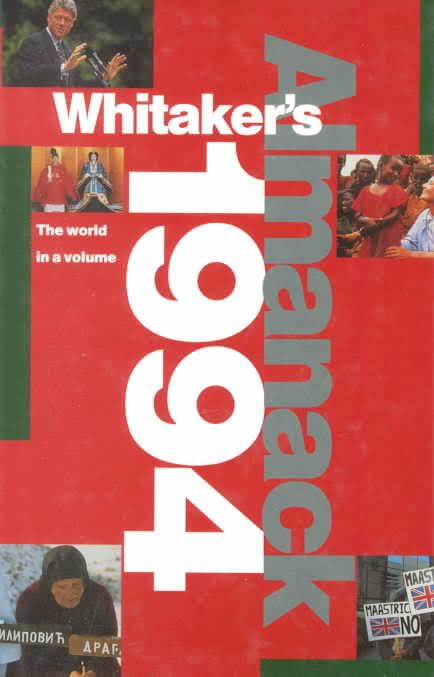Originally published 1868 | ||
 | ||
Similar Almanac books, Other books | ||
Whitaker's is a reference book, published annually in the United Kingdom. The book was originally published by J Whitaker & Sons from 1868 to 1997, then by The Stationery Office until 2003, and then by A & C Black which became a wholly owned subsidiary of Bloomsbury Publishing in 2011. The 149th edition of Whitaker's will be published on 17 November 2016.
Contents
First publication
Joseph Whitaker began preparing his Almanack in the autumn of 1868. He postponed publication of the first edition on learning of the resignation of Benjamin Disraeli on 1 December 1868, so that he could include details of the new Gladstone administration. At the same time, Whitaker continued to expand the information so that the initially planned 329 pages grew to 370. The first edition of the Almanack appeared on 23 December 1868, priced at 1 shilling, introduced by a short editorial piece written by Joseph Whitaker. It began "The Editor does not put forward this Almanack as perfect: yet he ventures to think that he has succeeded in preparing a work which will commend itself to those who desire to see improvement in this direction." It concluded by inviting critics to suggest ways in which improvements could be made. The Manchester Guardian, reviewing the first edition, described it as "the largest of the cheap almanacks" to appear, and noted it contained a great deal more valuable information than other such works. In 2013, the 2014 edition became the first to be published under the new simpler branding of "Whitaker's".
Content
Whitaker's Almanack consists of articles, lists and tables on a wide range of subjects including education, the peerage, government departments, health and social issues, and the environment.
The largest section is the countries directory, which includes recent history, politics, economic information and culture overviews. Each edition also features a selection of critical essays focusing on events of the previous year. Extensive astronomical data covering the forthcoming year is published at the rear of the book.
Whitaker's Almanack is not an encyclopaedia but more of a yearbook of contemporary matters and a directory of various establishments in the UK (such as clubs, public bodies and universities).
Whitaker's was prized enough that Winston Churchill took a personal interest in the continued publication of the book after its headquarters were destroyed in The Blitz; a copy is also sealed in Cleopatra's Needle on the north bank of the River Thames.
Formats
Each year the Almanack is published in two formats – the Standard Edition and a shortened Concise Edition. In previous years, a larger-format of the Standard Edition, bound in leather, was produced for libraries. Both editions were redesigned in 1993 and 2004 to increase the page size and improve legibility.
Editors
The Almanack's current Executive Editor is Ruth Northey, whilst former editor Hilary Marsden continues to contribute.
Editors since 1868
There have been nine editors since 1868:
